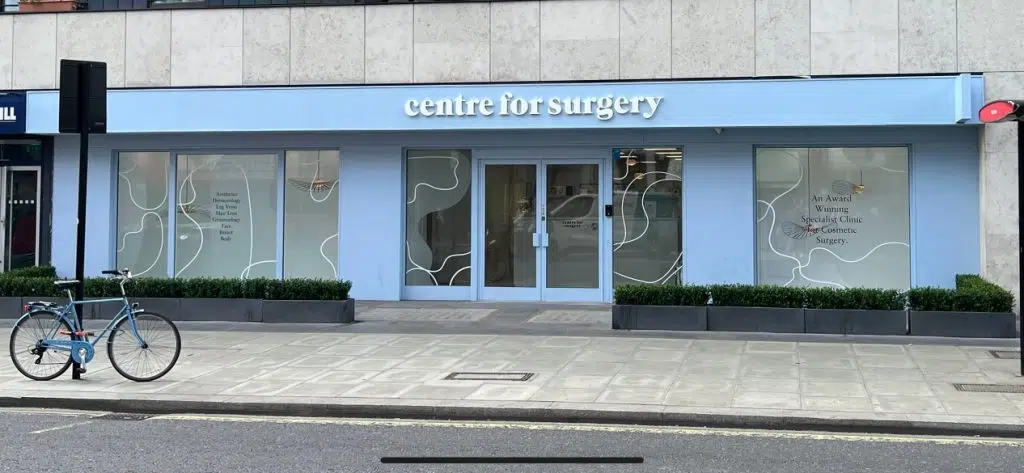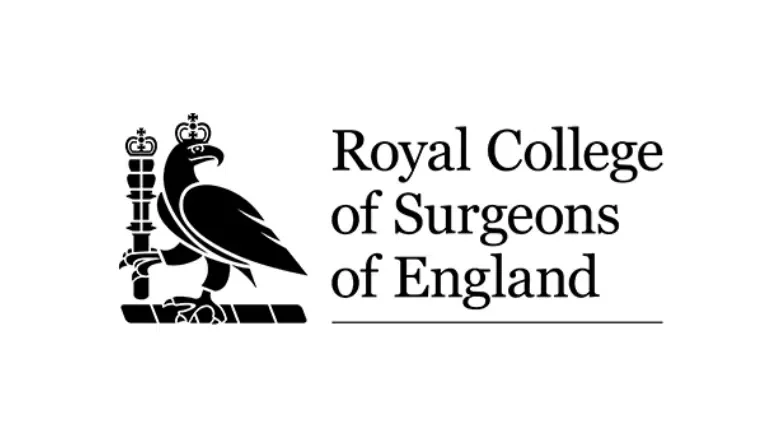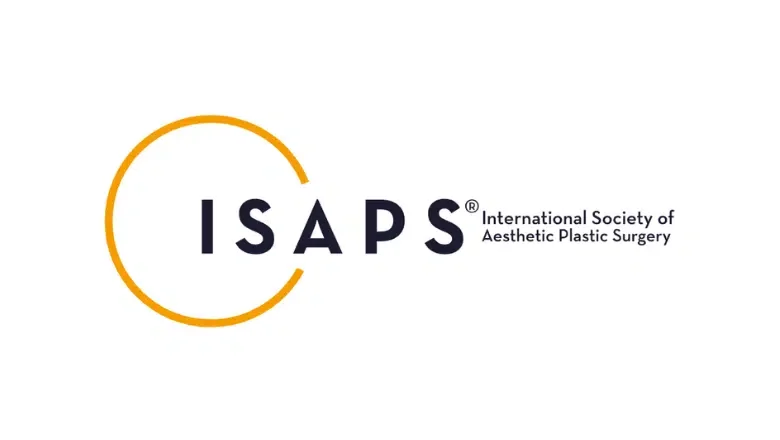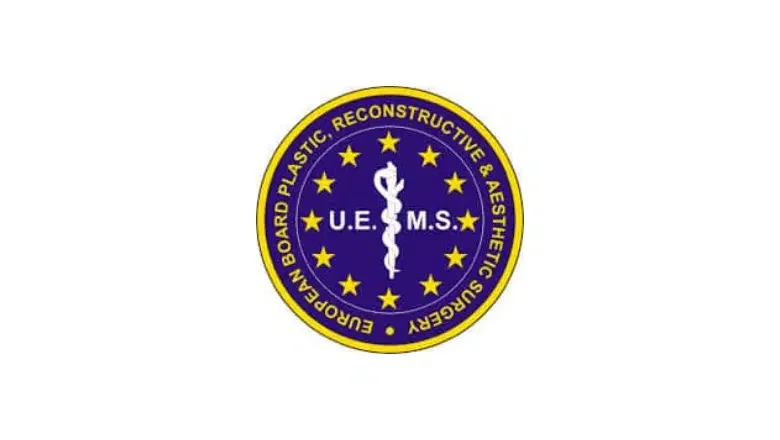Body Masculinisation Surgery London
Empower your journey towards gender affirmation with BMS surgery, providing personalised, expert care for a more authentically masculine physique
We understand that every individual’s journey towards their authentic self is unique, deeply personal and requires unwavering support. We are steadfastly committed to providing comprehensive and affirming healthcare services, designed to accommodate this crucial transformation in your life.
Body masculinisation surgery is a monumental stride on the path to affirming your identity. It is a transformative procedure that encompasses several surgeries, and each customised to meet your distinct aesthetic goals and personal requirements. Our approach is based on combining cutting-edge medical technology with empathetic care to ensure you achieve the desired outcomes while maintaining your comfort and safety.
There are several surgical procedures available under the umbrella of body masculinisation surgery, including chest masculinisation, body contouring, and reconstructive procedures. Our experienced surgeons will guide you, providing expert advice based on your individual needs and aesthetic desires. We offer an array of advanced procedures such as liposuction, abdominoplasty and fat grafting to create a more masculine appearance, while taking into consideration the overall harmony and proportionality of your physique.
RELATED: FTM Top Surgery FAQs
We are committed to patient-centred care and ensure that your journey with us is one of understanding, respect, and comprehensive support. From the moment you walk through our doors, we strive to make your journey as seamless and comfortable as possible, fostering a partnership that prioritizes your needs and respects your decisions.
Before embarking on your surgical journey, our team will provide a thorough consultation, giving you the opportunity to discuss your goals, fears, and expectations. It’s our job to make sure you’re well-informed about every aspect of the procedure, the recovery process, potential risks, and realistic outcomes.
We understand that the journey to self-acceptance is filled with joy, anxiety, hope, and vulnerability. It is our honour to be by your side, providing a safe space and personalised medical care, to help you become the best version of yourself.
Empower your journey towards a more authentic self with our gender-affirming body masculinisation surgery. Each step taken is a step closer to the reflection in the mirror that feels truly like you. Start your journey with us today and be greeted with the utmost respect, sensitivity, and professionalism at our Baker Street clinic. Your story is yours to tell, and we are here to help you live it.
What is Body Masculinising Contouring?
Body masculinisation contouring is an art as much as it is a science. The objective is to sculpt the body into a form that aligns with an individual’s identity, and our expert surgeons are highly skilled in the intricate techniques needed to achieve this transformation.
The primary components of body masculinisation surgery include procedures that adjust the distribution of fat and tissue within the body to establish a more traditionally masculine silhouette. Here is an in-depth look into these procedures:
Liposuction
An instrumental procedure in body masculinisation surgery, liposuction involves the careful removal of stubborn fat deposits from specific areas. In a quest to craft a more masculine physique, liposuction targets regions like the hips, thighs, and buttocks where fat often accumulates in a typically feminine pattern. By reducing these areas, we create a straighter and broader appearance, characteristic of a masculine form.
Tummy Tuck (Abdominoplasty)
This procedure assists in creating a flatter, firmer abdomen, a central feature in body masculinisation. The tummy tuck involves removal of excess fat and skin from the mid and lower abdomen, followed by tightening of the abdominal wall muscles and fascia. The result is a more toned, angular midsection that exudes masculinity.
Brachioplasty (Arm Lift)
In body masculinisation, the upper body’s contour plays a crucial role. Brachioplasty helps to redefine the upper arms and adjacent chest wall areas by removing excess skin and fat. This surgery results in more defined and muscular-looking arms, contributing to an overall masculine upper body profile.
Thigh Lift
The aim here is to create legs that appear more muscular and less curvy. A thigh lift achieves this by removing excess skin and fat, leading to more sculpted and toned legs.
Each person’s journey towards their authentic self and their bodies are unique. Recognising this, we tailor body masculinisation surgeries according to the needs and goals of each individual. You may find that liposuction alone brings you the results you desire, or you may opt for a combination of procedures for a more comprehensive transformation.
Dr Spiros Vlachos – Leading Specialist in Body Masculinisation Surgery
Dr Spiros Vlachos is a renowned expert in body masculinisation surgery, offering a comprehensive range of procedures tailored to help patients achieve a more defined, masculine physique. With extensive experience in liposuction, abdominoplasty, arm lift, and thigh lift, Dr Vlachos specialises in sculpting the body to enhance masculine contours.
His individualised approach ensures that each treatment plan is customised to the patient’s goals, whether it’s achieving a sharper, more angular torso, enhancing muscle definition, or refining body proportions. Dr Vlachos utilises advanced surgical techniques to deliver natural-looking, long-lasting results with minimal downtime.
Benefits of Body Masculinisation Surgery
Body masculinisation surgery offers a wealth of benefits, both physical and psychological, that can profoundly enhance an individual’s quality of life and sense of self. Here are some of the key advantages:
Enhanced Physical Appearance
The most immediate and obvious benefit is the transformation of your physical appearance to align with your gender identity. Body masculinisation surgery can make your body look more traditionally masculine, changing areas like the chest, abdomen, arms, and legs to match your authentic self.
Increased Confidence and Self-Esteem
Seeing your body align more closely with your identity can significantly improve your self-esteem and confidence. For many, this newfound confidence translates into increased comfort in social situations and can lead to a positive impact on relationships and professional endeavours.
Improved Mental Health
Body dysphoria can lead to significant emotional distress and mental health problems, including anxiety and depression. By helping to alleviate body dysphoria, body masculinisation surgery can greatly improve mental health and emotional well-being.
Personal Satisfaction
The sense of satisfaction from finally feeling comfortable in your own body is immeasurable. Having a body that better reflects your identity can make everyday experiences more enjoyable and life-affirming.
Increased Comfort in Clothing
Clothes often fit better after body masculinisation surgery. Men’s clothes are typically designed with a different body shape in mind, and post-surgery, individuals may find that they feel more comfortable and confident in their clothing.
Reduction in Need for Binding
Those who undergo chest masculinisation surgery often experience relief from the discomfort associated with binding, which can cause issues such as back pain, breathing difficulties, and skin problems.
Am I suitable for Body Masculinisation Surgery?
Body masculinisation surgery is a significant decision that requires thorough consideration and preparation. If you’re contemplating this transformative procedure, it’s essential to understand whether you’re a suitable candidate. Below, we detail some criteria that often characterise the ideal candidate:
Good Overall Health
Given that body masculinisation surgery involves invasive procedures, optimal health is paramount for effective healing post-surgery. You should be free from any serious medical conditions that could potentially complicate the surgery or hinder your recovery. Conditions like diabetes, heart disease, or any chronic illness would need to be well-managed and discussed in depth with your surgeon prior to the procedure.
Healthy Lifestyle
Maintaining healthy habits such as balanced nutrition, regular exercise, and ample rest contributes significantly to your body’s healing capacity. Unhealthy habits, like smoking or excessive drinking, can impede the healing process and increase the risk of complications. It’s highly recommended that you cease these activities well in advance of your surgery.
Stable Weight
A stable, healthy weight is vital for the best outcomes. Significant weight fluctuations can affect the results of the surgery and potentially compromise the healing process. Therefore, patients should aim to maintain a stable weight before and after the procedure.
Age and Consent
Candidates should be at least 18 years of age and able to give informed consent. It’s crucial that the individual is mentally mature enough to fully understand the implications of such a permanent body change.
Psychological Readiness
A strong sense of gender identity and a deep understanding of the journey ahead are paramount. The ideal candidate should be certain about their decision and understand that body masculinisation surgery represents a significant, permanent change. Psychological support or counselling during this journey is often recommended to help navigate any emotional challenges that might arise.
Realistic Expectations
While body masculinisation surgery can significantly alter physical appearance, having realistic expectations is crucial. The results vary from person to person, depending on individual anatomy, health, and the extent of the procedures performed.
Preparing for Body Masculinisation Surgery
Embarking on the journey of body masculinisation surgery requires careful preparation, physically, emotionally, and logistically. Your well-being is paramount in ensuring a smooth surgical process and recovery. Here’s a guide on how to prepare:
Physical Preparation
Healthy habits lay the groundwork for a swift recovery. Regular exercise and a balanced diet help bolster your body’s resilience and healing capacity. If you smoke, it’s crucial to quit at least a month prior to the procedure as it can impede wound healing and increase the risk of complications. Limiting your intake of caffeine and alcohol is also beneficial.
Certain medications and supplements might increase the risk of bleeding or interact with anaesthesia. It’s important to discuss your current medication regimen with your surgeon. They will advise on what should be discontinued or adjusted in the weeks leading up to the surgery.
Mental Health Preparation
Undergoing a life-altering procedure like body masculinisation surgery can stir up a range of emotions. It’s normal to feel a mix of excitement, anxiety, and uncertainty. Therapeutic support can help navigate these feelings, offering strategies to manage stress and bolster resilience.
Lean on your support network of friends and family during this time, sharing your experiences and feelings as you feel comfortable. Ensure that you voice any questions or concerns during your consultations with your surgeon – it’s their job to ensure you feel informed and prepared.
Employment
Depending on the nature of your work and the extent of your procedure, you might need to arrange some time off. For most desk-based roles, patients can typically return to work about a week post-surgery. However, jobs that require heavy lifting or strenuous physical activity may require a longer recovery period.
Preparing Your Recovery Space
Organising your living space can make your post-operative period more comfortable. Fill any prescriptions your doctor has recommended before BMS surgery so they’re ready when you return home. Ensure your living space is clean, and arrange items so that essentials are easily accessible. Having toiletries, medication, comfortable clothing, and entertainment within easy reach minimises strain and promotes a more relaxing recovery environment.
Body Masculinising Procedures
Body masculinisation surgery comprises several procedures that can be performed either separately or together, depending on the unique needs and goals of each patient. The key procedures in body masculinisation surgery include:
Chest Masculinisation (Top Surgery):
Also known as FTM (female-to-male) top surgery, this procedure involves the removal of breast tissue to create a more masculine chest contour. There are various techniques available, the most common ones being double incision mastectomy with nipple grafts, and the periareolar or “keyhole” method.
Liposuction and Body Contouring:
Liposuction can be used to remove fat deposits from areas such as the hips, thighs, and buttocks to create a more masculine body contour. In combination with other techniques, this can help to achieve a straighter and narrower silhouette that is characteristic of a male physique.
Abdominoplasty (Tummy Tuck):
A tummy tuck can be used to create a flatter and more muscular-looking abdomen. This procedure involves removing excess skin and fat from the abdominal area and tightening the underlying muscles.
Brachioplasty (Arm Lift):
An arm lift can help to create more muscular-looking arms by removing excess skin and fat and reshaping the underlying supportive tissue.
Thigh Lift:
A thigh lift can help to create more muscular-looking legs by removing excess skin and fat and reshaping the underlying supportive tissue.
Body Implants:
Various body implants, such as calf implants, buttock implants or pectoral implants, can be used to enhance the muscular appearance of different body areas.
The choice of procedures will depend on your goals for body masculinisation and the recommendations of your surgeon.
Recovery after Body Masculinising Surgery
Recovering from body masculinisation surgery can be a process that requires both patience and diligent aftercare. Your comfort and the successful healing of your surgical sites are paramount, and adhering to your surgeon’s guidelines can ensure a smoother recovery. Here are some more specifics on recovery from key body masculinisation procedures:
Liposuction:
The recovery period for liposuction varies depending on the extent of the procedure. The small incisions made during liposuction are usually closed with dissolvable sutures. You might experience some discomfort, swelling, and bruising, which gradually subsides over a few weeks.
To support healing, a compression garment is often worn for a few weeks to help reduce swelling and support the new body contours. Pain medication may also be prescribed to help manage any discomfort.
While many patients can return to desk jobs within a few days, strenuous physical activity should be avoided for about two weeks. It’s important to note that the final liposuction results will become apparent once all swelling has subsided, which may take a few months.
Tummy Tuck (Abdominoplasty):
Recovery from a tummy tuck typically takes longer than from liposuction. Immediately following surgery, your abdomen will be swollen, and you will likely feel some discomfort, which can be controlled with pain medication.
The surgeon usually places temporary drains to remove excess fluid or blood, which are typically removed after a few days. A compression garment will be needed to support the abdomen and help reduce swelling.
Strenuous activity and heavy lifting should be avoided for six weeks following a tummy tuck. Most patients can return to work within two weeks, but this largely depends on the nature of your job and your personal recovery speed.
Everyone heals at their own pace, and it’s important to listen to your body and not rush through the recovery process. Regular follow-ups with your surgeon will ensure your recovery is on track and any concerns are promptly addressed. At Centre for Surgery, our dedicated team is committed to providing comprehensive post-operative care and support throughout your recovery journey.
Risks and Potential Complications of Body Masculinising Contouring
Body masculinising contouring carries potential risks and complications as with any surgical procedure. While these procedures are generally safe and complications are rare when performed by experienced surgeons, patients need to be fully informed. Some potential risks and complications include:
Infection
Any surgical procedure comes with a risk of infection. While rare, infections can be serious and require treatment with antibiotics or additional surgeries in severe cases.
Bleeding and Haematoma
Bleeding can occur during or after surgery. Haematoma, a collection of blood outside of the blood vessels, may also occur and might require additional surgery to resolve.
RELATED: Breast Haematoma After Surgery – Causes, Symptoms and Treatment
Seroma
A seroma is a collection of serous fluid in a pocket under the skin. It often requires drainage.
Numbness or Other Changes in Skin Sensation
Altered sensation at and around the surgical sites can occur, which is usually temporary but can be permanent in some cases.
Scarring
All surgical procedures result in some degree of scarring. Skilled surgeons use techniques to minimise visible scarring, and scars typically fade over time.
Unsatisfactory Results
There is always a risk that the surgery’s outcome will not meet your expectations. Factors such as individual healing patterns and lifestyle choices can impact the final result.
Complications Related to Anaesthesia
Reactions to anaesthesia vary widely from person to person and can include nausea, vomiting, or more severe allergic reactions.
Deep Vein Thrombosis and Pulmonary Embolism
Though rare, these serious conditions can occur following any surgical procedure. They involve the formation of blood clots in the deep veins of the body, often in the leg, which can travel to the lungs.
Slow Healing
Some people may experience slow wound healing and prolonged recovery.
Before surgery, you will have a detailed consultation with your surgeon, who will review the potential risks and complications with you. This is your opportunity to ask any questions and express any concerns.
Why choose Centre for Surgery for Body Masculinisation Surgery?
Centre for Surgery is not just a clinic; it is a haven for those in need of medical attention, understanding, and empathy, regardless of gender identity or sexual orientation. We take immense pride in our reputation for inclusivity and our commitment to providing high-quality care to all our patients.
Here are a few reasons why Centre for Surgery could be the ideal choice for your body masculinisation surgery:
Expertise and Experience
Our team comprises highly skilled surgeons with years of experience performing body masculinisation surgeries. They stay up-to-date with the latest techniques and technologies to ensure the highest standards of care.
Personalised Approach
We understand that each individual’s journey is unique. Therefore, we work with you to create a personalised treatment plan that aligns with your specific goals and expectations.
Comprehensive Care
Our care for you doesn’t end after the surgery. We provide thorough post-operative care and follow-up appointments to ensure you are healing well and are satisfied with the results.
Safe Environment
We strive to create a safe, comfortable, and welcoming environment where you can feel at ease to discuss your needs and expectations. We are committed to maintaining a respectful and discrimination-free clinic.
Excellent Patient Satisfaction
Our patients’ testimonials reflect our commitment to high-quality care and patient satisfaction. Many of our patients have reported increased confidence and improved quality of life following their surgeries.
Confidentiality
We respect your privacy and uphold strict confidentiality standards. Your personal information and treatment details are secure with us.
Choosing Centre for Surgery for your body masculinisation surgery means choosing a supportive and understanding team that respects your journey and works to help you achieve your goals. We are here for you at every step, providing you with the medical expertise and emotional support you need throughout your transition. Your gender affirmation journey is important to us, and we are dedicated to helping you live your most authentic life.
FAQs
-
What is BMS Surgery?"BMS surgery" often refers to Body Masculinisation Surgery, a term that encompasses a range of surgical procedures designed to help transgender men and non-binary individuals attain a more traditionally masculine physique. The exact procedures involved can vary widely depending on the individual's goals and body, but commonly include procedures like chest masculinisation (or "top surgery"), liposuction, body contouring, abdominoplasty (tummy tuck), brachioplasty (arm lift), and thigh lift.
These procedures aim to reduce feminine curves, remove excess fat and skin in certain areas, and create a more masculine appearance overall. -
Is body masculinising surgery permanent?Yes, body masculinisation surgery is permanent. These procedures are intended to create lasting changes in the body's physical shape and contour to align with the patient's gender identity.
For instance, once breast tissue is removed during chest masculinisation surgery, it will not regrow. Similarly, the removal of fat cells during liposuction is permanent — those specific cells will not come back. However, it's important to note that remaining fat cells can still grow larger with significant weight gain, which may alter the body contour achieved through surgery.
In the case of body implants, such as pectoral implants, these can technically be removed if desired or necessary, but they are designed to provide a permanent enhancement.
A commitment to maintaining a healthy lifestyle with a balanced diet and regular exercise is crucial for preserving the results of body masculinisation surgery. Moreover, patients should remember that these surgeries do not stop the natural ageing process, which will continue to affect the body's appearance over time.
-
Is body masculinising surgery reversible?Body masculinisation surgery is intended to provide permanent changes to the body to align it more closely with a person's gender identity. As such, these surgeries are generally not designed to be reversible.
That being said, certain aspects of body masculinisation surgeries could theoretically be reversed or altered with additional surgery, but these would be complex procedures with their own risks and complications. For example, if liposuction was used to remove fat from specific areas of the body, it would not be possible to replace those exact fat cells. However, fat grafting could potentially be used to add volume back to certain areas.
Similarly, if chest masculinisation surgery was performed and breast tissue was removed, it would not regrow naturally. While breast implants or fat grafting could be used to recreate female breasts, this would require additional surgery and would not restore the original breast tissue.
All surgeries come with potential risks and complications. Anyone considering body masculinisation surgery should be certain about their decision and have a thorough understanding of the procedure and its permanence.












